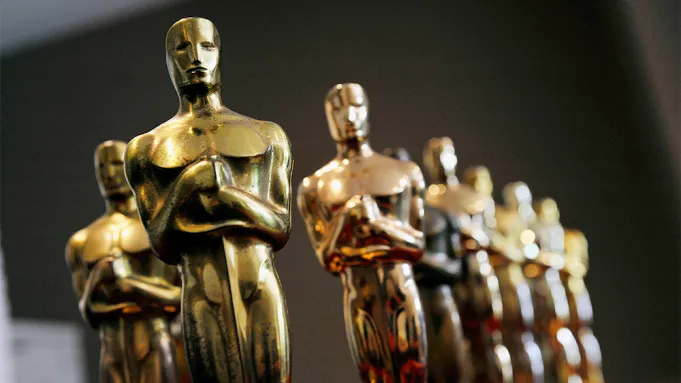Marlee Matlin, the Oscar-winning actress and long-time advocate for accessibility, received a prestigious Academy Award of Merit at the Academy’s annual Scientific and Technical Awards ceremony. Held on Tuesday at the Academy Museum of Motion Pictures, the award recognizes individuals and innovations in captioning technology that make films accessible to all audiences.
Matlin’s Advocacy for Accessibility in Film
Matlin accepted the Oscar statuette for her efforts in advancing captioning technology, which includes both open and closed captioning for film. During her acceptance speech, Matlin expressed hope that the award would raise awareness about the importance of accessibility and serve as a reminder of the Academy’s commitment to inclusion.
“The Academy is the deaf community’s biggest ally,” Matlin shared in a conversation with Variety. “It is crucial that all audiences, regardless of ability, can enjoy films together. We’re still on a path toward full accessibility, and there’s much more to be done.”
Matlin, who has been a leading voice in pushing for accessible entertainment, emphasized that captioning should be available not just for new films but for classic ones too. Her remarks underscored the ongoing need to integrate captioning technology into every aspect of the film industry.
The Broader Impact of the SciTech Awards
This year’s ceremony also celebrated other technological advancements in film. The event, originally scheduled for February 18 but postponed due to the Los Angeles fires, presented Technical Achievement Awards and Scientific and Engineering Awards to innovators who have made significant contributions to the film industry.
“Tonight, we celebrate those who have made cinema the global force that it is today,” said Diego Luna, the host of the event and star of Andor, addressing the honorees.
Highlights of Technological Innovation
Several key innovations were recognized at the ceremony, including advancements in visual effects and on-set safety technologies. One notable achievement was Wētā FX’s ML Denoiser, a machine learning tool used to enhance the quality of computer-generated (CG) images. Javor Kalojanov and Kimball Thurston received Technical Achievement Awards for their work on the Denoiser, which has been used on major projects such as Better Man and A Minecraft Movie. Thurston explained that this technology helps “empower creativity,” noting that it improves image quality while saving time for artists.
In addition, Disney’s ML Denoiser earned Scientific and Engineering Awards for its creators Thijs Vogels, Fabrice Rousselle, David Adler, Gerhard Röthlin, and Mark Meyer. The tool helps streamline the denoising process, improving both efficiency and image quality in film production.
Advancements in Stunt Safety and Camera Stabilization
The ceremony also highlighted advancements in stunt safety, including the development of specialized gels that protect stunt performers during fire scenes. Jayson Dumenigo received a Scientific and Engineering Award for the Action Factory Hydrogels, which allow fire to burn safely on the skin of performers. Meanwhile, Technical Achievement Awards were given to Neeme Vaino for Fireskin360 Naked Burn Gel and to Dustin Brooks and Colin Decker for Fire for Hire’s naked burn gel.
In the field of camera stabilization, several innovations were recognized for their contributions to smoother, more stable shots. Curt Schaller received a Scientific and Engineering Award for his work on the Trinity 2 camera stabilization system. The Tiffen Steadicam Volt stabilization system, developed by Steve Wagner, Garrett Brown, Jerry Holway, and Robert Orf, was also awarded, along with the hand-held Stabileye system by Dave Freeth.
Contributions to Sound and VFX
Sound technology was also a focal point at the ceremony. Nir Averbuch, Yair Chuchem, and Dan Raviv were honored with Scientific and Engineering Awards for their work on Sound Radix’s Auto Align Post 2, a tool used to blend multiple microphones during post-production. This innovation has significantly improved the quality of sound editing in films.
Additionally, Technical Achievement Awards were given to teams that developed transportable motion base technology, including the NACMO series and the Ronin 2 gimbal system, which were created by experts such as Mark Noel and Su Tie. The Ziva VFX system, which helps visual effects artists create realistic muscles and skin for digital characters, also earned recognition with Technical Achievement Awards for its creators.
Continuing Innovation in Filmmaking
The recognition of these trailblazers at the SciTech Awards underscores the growing role of technology in filmmaking. As the industry continues to evolve, innovations in accessibility, safety, and visual effects are helping shape the future of cinema.
Marlee Matlin’s acceptance of the Oscar statuette serves as a powerful reminder of the importance of accessibility and the need for continued progress. With advancements in captioning technology and other areas, the film industry is increasingly making strides toward a more inclusive and innovative future.

